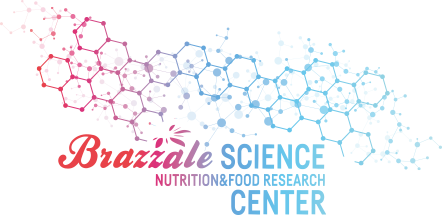The attention to the isomeric fatty acids, known with the acronym CLA, that are present in the milk of ruminants in concentrations of 0.3 to 1.0 % of the total fatty acids, is due to their chemical and structural peculiarities. The presence of conjugated double bonds in the positions between 6 and 14 of the molecular structure allows for the presence of 28 isomers, as demonstrated in a paper titled Chromatographic separation and identification of conjugated linoleic acid isomers by J.A.G. Roach et al., published in Anal. Chim. Acta in 2002.
These minor fatty acids are formed by bacterial activity in the rumen, which triggers the biohydrogenation of the two fatty acids, linoleic acid, and linolenic acid: these, in turn, derive from the cows’ diet. This transformation is catalyzed by the action of an enzyme, named with the acronym SDC (delta-9 desaturase) present in the mammary glands.
As a matter of historical curiosity, these CLA fatty acids, though present in foods of other origin such as meat, had already attracted the attention of Y.L. Ha and his team, who had written a paper titled Anticarcinogens from fried ground beef: heat-altered derivatives of linoleic acid, published in the journal Carcinogenesis. In fact, the authors described the anticarcinogenic activity of extracts of “fried” ground beef on tumors of the epidermis of rats and this activity was due to derivatives of linolenic acid produced by thermal stress.
There are few experimental studies to date that correlate the consumption of CLA isomers, acquired through the consumption of dairy products, that have a protective effect on carcinogenesis: the available data mentioned herein are mainly epidemiological in nature. The citation of two works in this regard show at least an attention, at least formalized, to the importance to be attributed to the consumption of dairy products in diet, for reasons that clearly contrast the inferences that some make, without any experimental proof, aimed at underestimating the fundamental role played by the consumption of milk and its derivatives. The two citations refer to articles by S. Benjamin et al. and P. Knekt et al.: the former, more recent (2015), is titled Pros and cons of CLA consumption: an insight from clinical evidences and appeared in Nutr. Metabol, 12-4, and the second (1996) is titled Intake of dairy products and the risk of breast cancer and was published in Br.J.Cancer, 73-687. It is worth noting that the latter article presents an experimental study conducted on 4697 women whose food consumption was followed for 25 years. Its conclusions stressed that there is absolutely no correlation between milk consumption and the onset of breast cancer.
Another valuable scientific contribution was made by A. Aro et al. in his paper published in Nutr. Cancer 38, 151-157 in 2000 titled Inverse association between dietary and serum conjugated linoleic acid and risk of breast cancer in postmenopausal women.
Among other things, it is important to point out that the arguments put forward are the result of studies related to the dietary consumption of cheese.
Several theories that could explain the possible biological and protective effect of CLA fatty acids have been proposed recently. One of the most accredited refers to the effect that CLA fatty acids can perform in replacing arachidonic acid in membrane phospholipids, countering the synthesis of eicosanoids. Other hypotheses are those related to the anti-inflammatory effect of CLAs.
As regards the subject of fatty acids that originate quantitatively minor derivatives, it is worth mentioning the short chain fatty acids, more commonly called SCFAs, such as butyric acid (C4), caproic acid (C6), caprylic acid (C8), and capric acid (C10). These compounds derive from fermentative processes produced by rumen bacteria, are volatile and therefore responsible (with other compounds) for the characteristic aroma of cheeses. These are the same fatty acids involved in the evolution of the aroma during the ripening phase. During this very complex chemical and physical process, these same fatty acids originate derivatives with a complex chemical structure, through the action of enzymes generically called “lipase” and “esterase.” Therefore, during the ripening of dairy products, starting from short chain fatty acids (SCFAs), a series of volatile derivatives with an incredibly complex structure that give typical sensory “notes” and constitute aromatic “blends” specific to each product are generated. From a purely chemical point of view, the phenomenon is similar to the one that takes place during the aging of wines, where volatile acids derived from the metabolism of the grape’s constituents spontaneously synthesize new volatile compounds having an aromatic effect. In this case too, the natural synthesis of new derivatives takes place by enzymatic action, so that the “enzymatic load” of the blend largely conditions the sensorial response of the aging wine. Fine casks, in an area of the world devoted to excellence (Douro wines in Portugal), bear the words “wine rests, works and ages in silence,” almost as if to remember that the slow and continuous enzymatic activity, produced by microorganisms in the environment and grapes, does not produce results only in the production phase but also and above all in the rest phase, aging in a “creative” sense.
Likewise, the enzymatically driven phenomena in aged hard cheeses are processes that take place with a slowness that is, to say the least, exasperating: the compounds that are formed in the phenomenon that we call “ripening” are not only useful to produce the “bouquet” but they also contribute to “biologically” enriching the already rich content of nutrients provided by cheese. It would be (and unfortunately is) a serious mistake to attribute these ripening phenomena solely the metabolic function aimed at the robustness of aroma: every aroma component has its own biological function accomplished at even very limited concentrations. In this sense, science still has a very long way to go: in coming years, it will have to focus the tools of knowledge on the most hidden targets, which are undoubtedly those related to the biological effect of minor compounds. Among these quantitatively “minor” components, which spontaneously develop in concentrations in the order of parts per million (ppm, i.e., mg/kg) or parts per billion (ppb, i.e., µg/kg), there are some that are essential for the aroma but there are also many whose biological effect is not negligible. It is precisely the combination of various minor components that generates a “synergistic” effect both in the natural aromatizing activity and in the activity that influences the metabolic balance in humans. Identifying the many “still hidden” activities, alongside those more easily identifiable involved in the aromatic load, will be the focus of future scientific research. In particular, the aims of the Brazzale Science Center will include “fine” analytics, which is among the most crucial to lay the foundations and make a strong contribution to the full understanding of the nutritional value of dairy compounds in the future.
The few references to ripening made in this article are sufficient for now to debunk the notion expressed by some about the gradual elimination of water during ripening as a means of quantitative enrichment in protein and fatty matter: macroscopic nutrient enrichment is the most obvious and least scientific result that can be presented to consumers. In fact, we will increasingly focus our attention on the evidence of enzymatic phenomena related to ripening and to technologies linked to the “microclimate” to which Brazzale S.p.A. is devoting particular scientific attention, in order to optimize those phenomena that make the activities of dairy products absolutely irreplaceable in their use and acceptance by consumers in their everyday diet.


